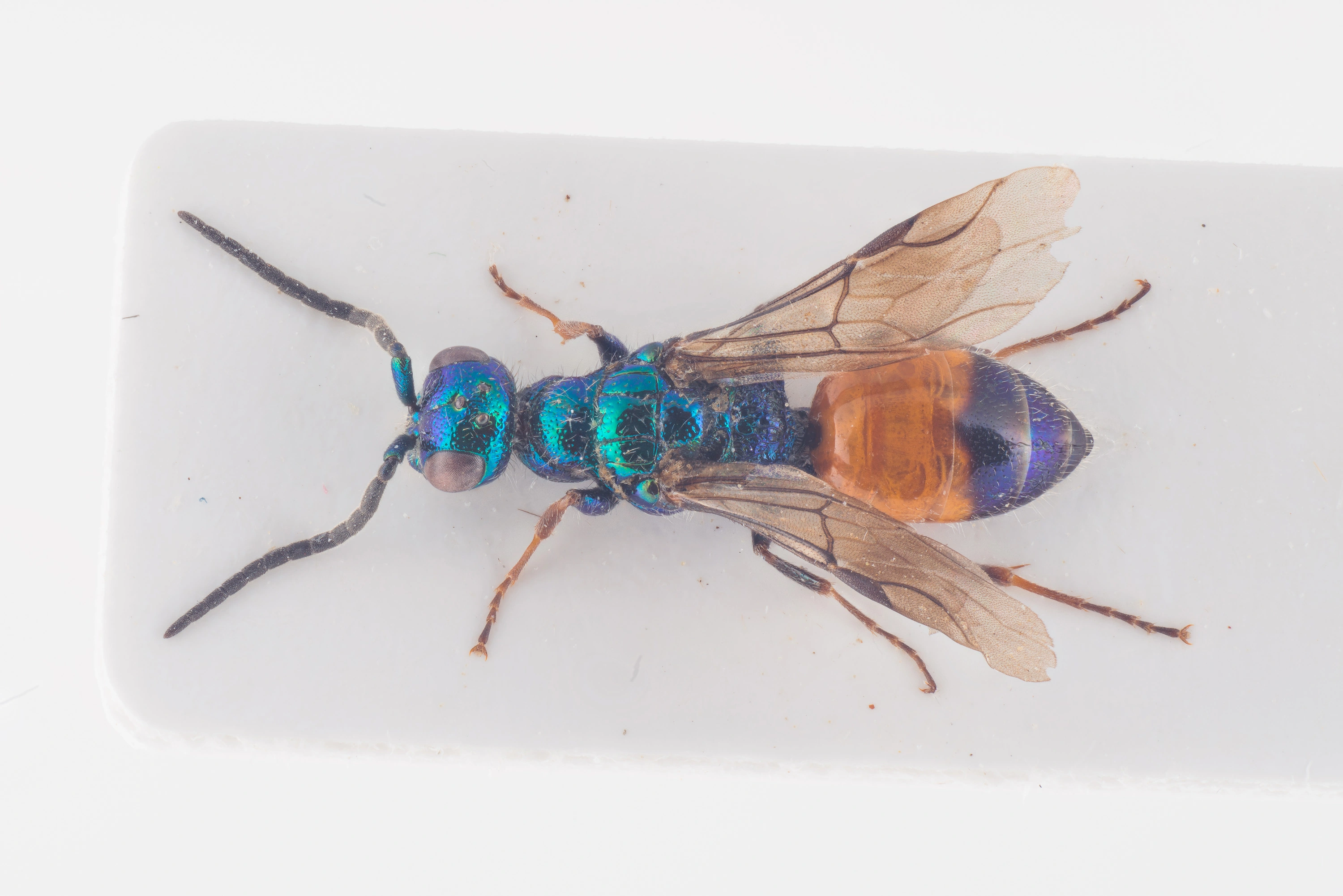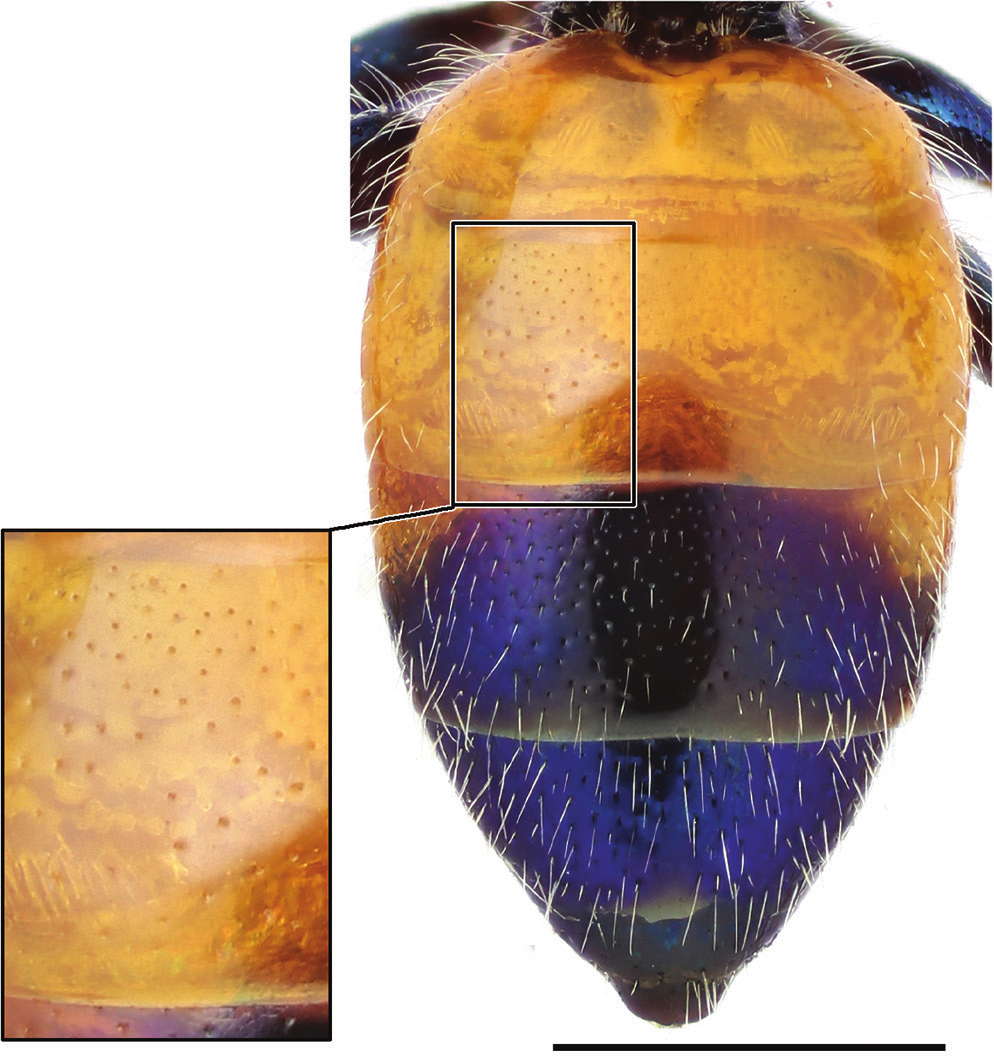Cleptes semicyaneus
A very rare species only recorded from a few coastal sand dunes in Norway, Sweden and Denmark. The species is a cleptoparasite of sawflies assosiated with Salix repens. Cleptes semicyaneus may be separated from C. semiauratus by the lack of a basal pronotal furrow. The species is very similar to C. nitidulus.
- Innhold
- Diagnosis
- Distribution
- Biology
Diagnosis
Figure 15
Head, dorsal view (arrow indicating postocellar fovea): C. semicyaneus ♂.
Figure 17
Metasoma, dorsal view: C. semicyaneus ♂. Scale 1 mm.
Length 4–7 mm.
Both sexes resemble C. nitidulus superficially, but the legs are darker brown, the punctation of the tergites is sparser (Fig. 17) and the vertex does not have postocellar foveae (Fig. 15). The female differs also from C. nitidulus by having blue-violet metallic sheen posteriorly on the metasoma. In the male, this blueviolet sheen is more extensive (Fig. 17) than in C. nitidulus.
Distribution
Denmark, Norway, Sweden. Very rare.
Trans-Palearctic: from western Europe to Siberia (Irkutsk) (Móczár 1997).
Be aware that the records present in the GBIF map may be misleading for some countries due to unrevised data sets or missing information.
GBIF Taxon: Cleptes semicyaneus Tournier, 1879Biology
Habitat: sparsely vegetated coastal sandy areas (Hansen et al. 2010, Fritz and Larsson 2010).
Flight period: June to August.
Host: unknown, possibly a sawfly living on creeping willows (Salix repens Linnaeus) (Ødegaard et al. 2009).


